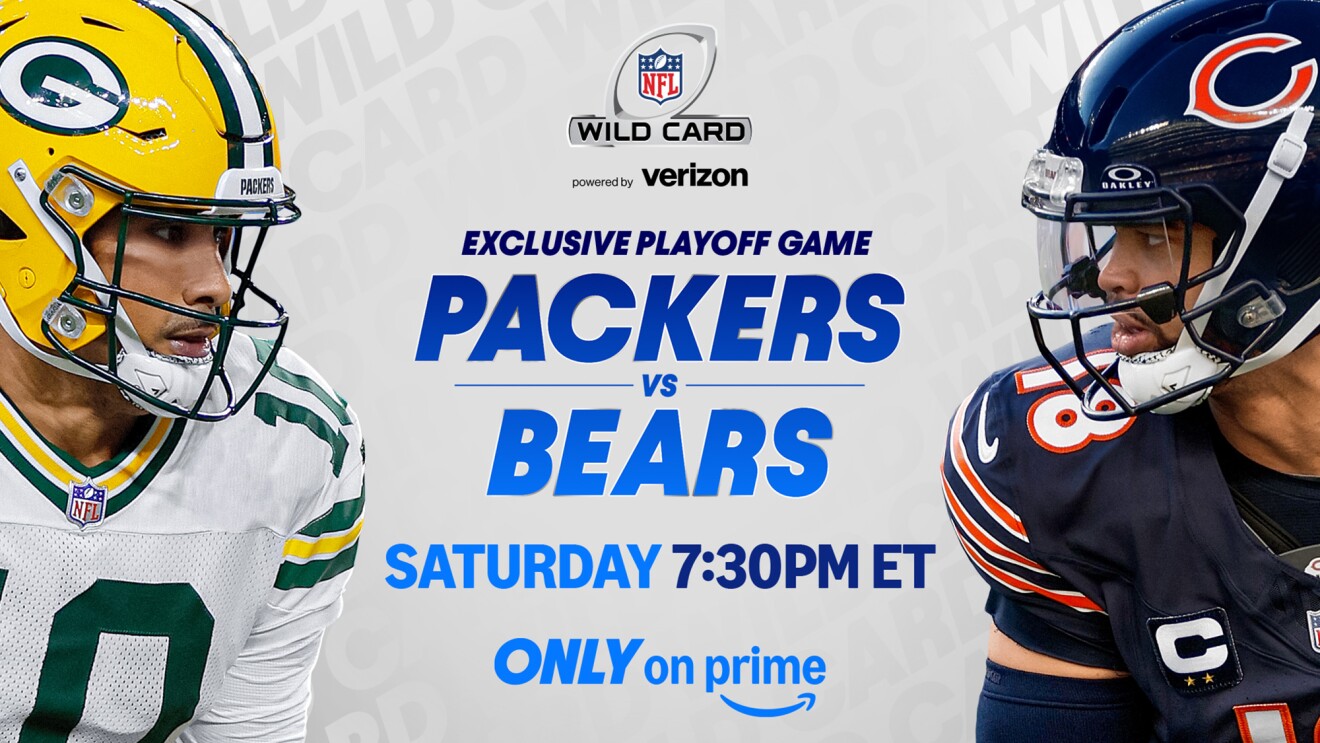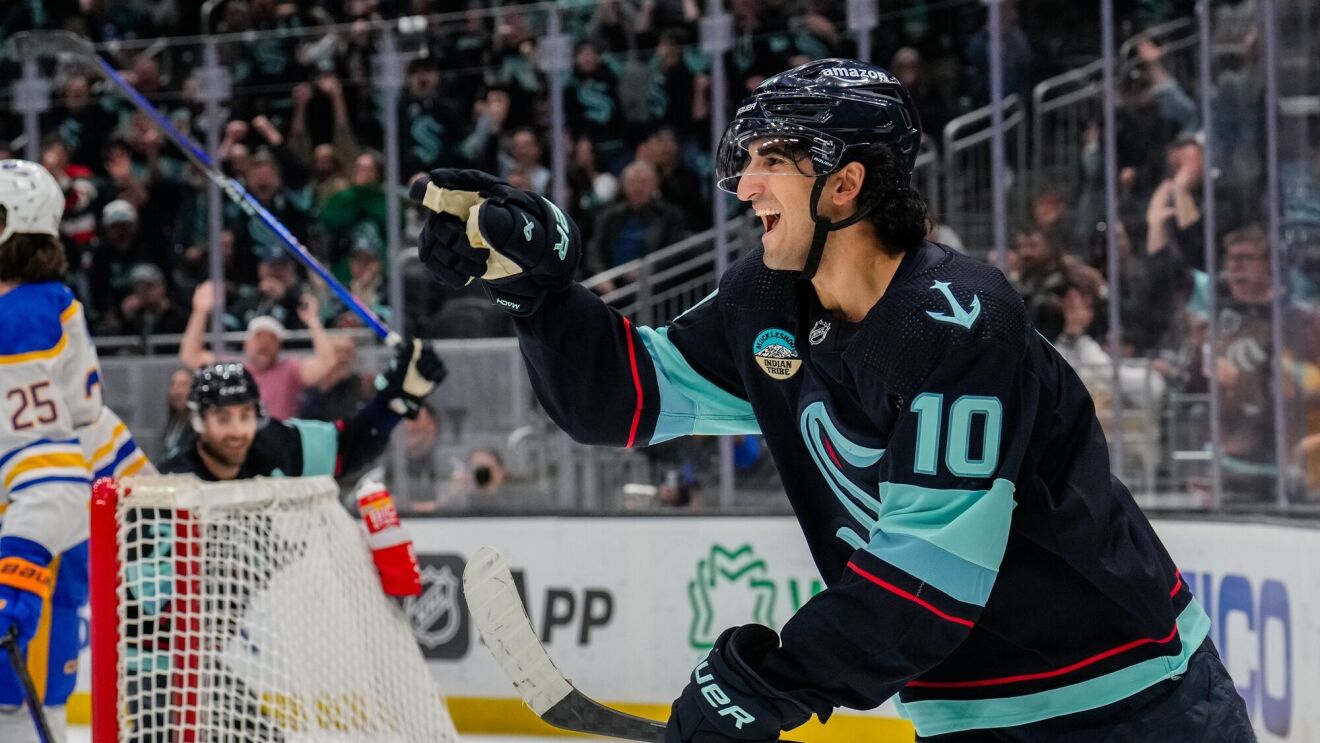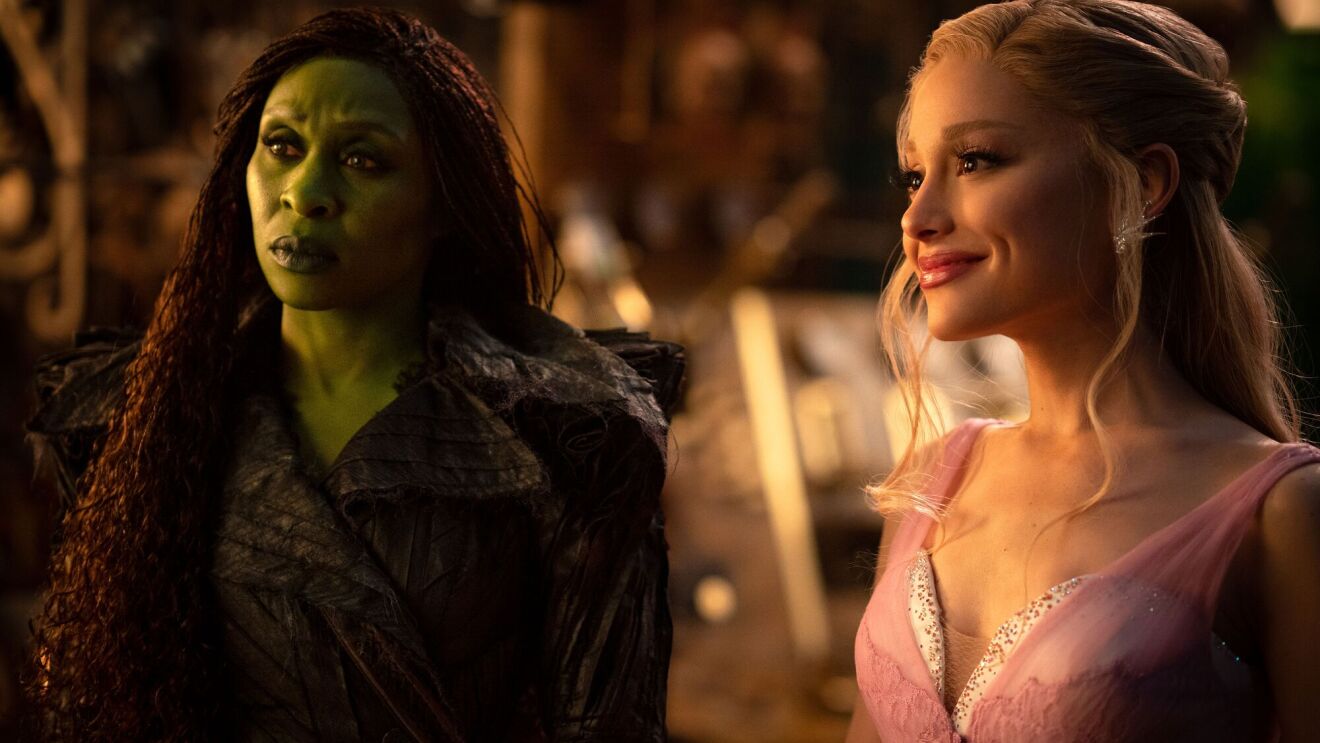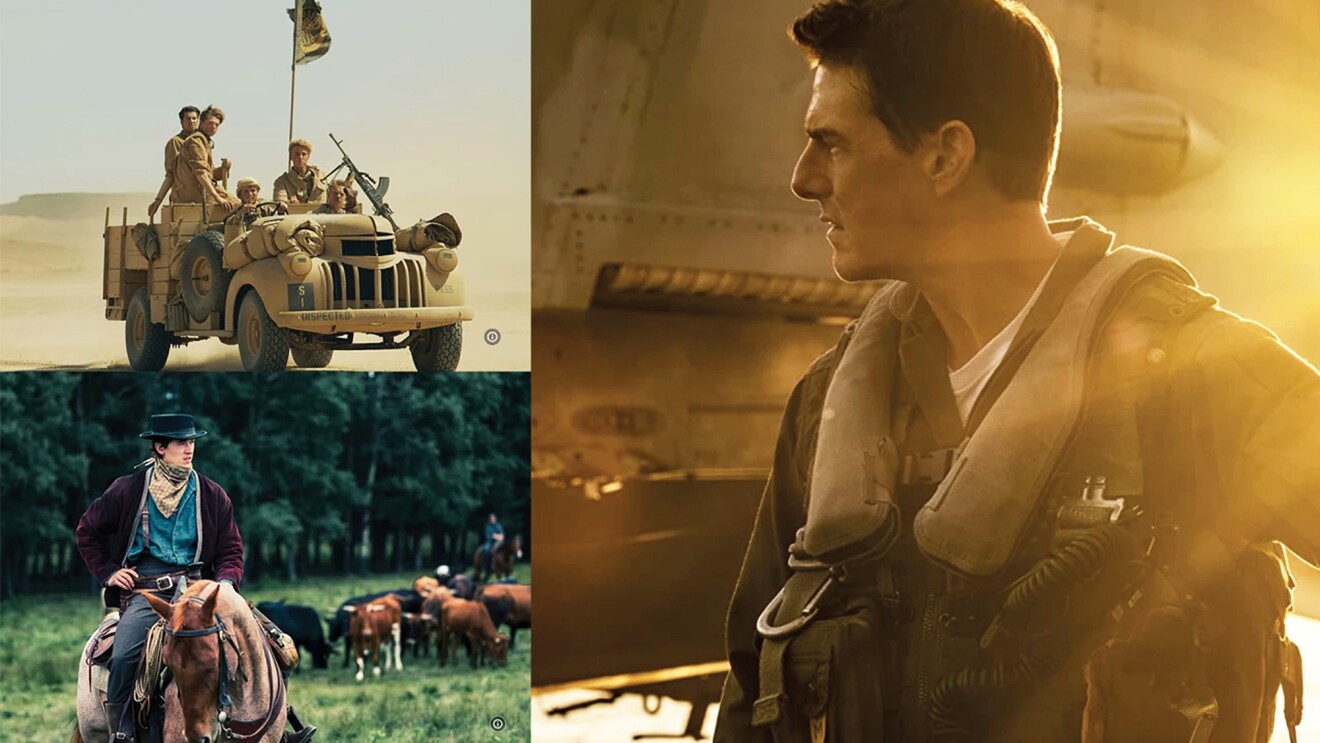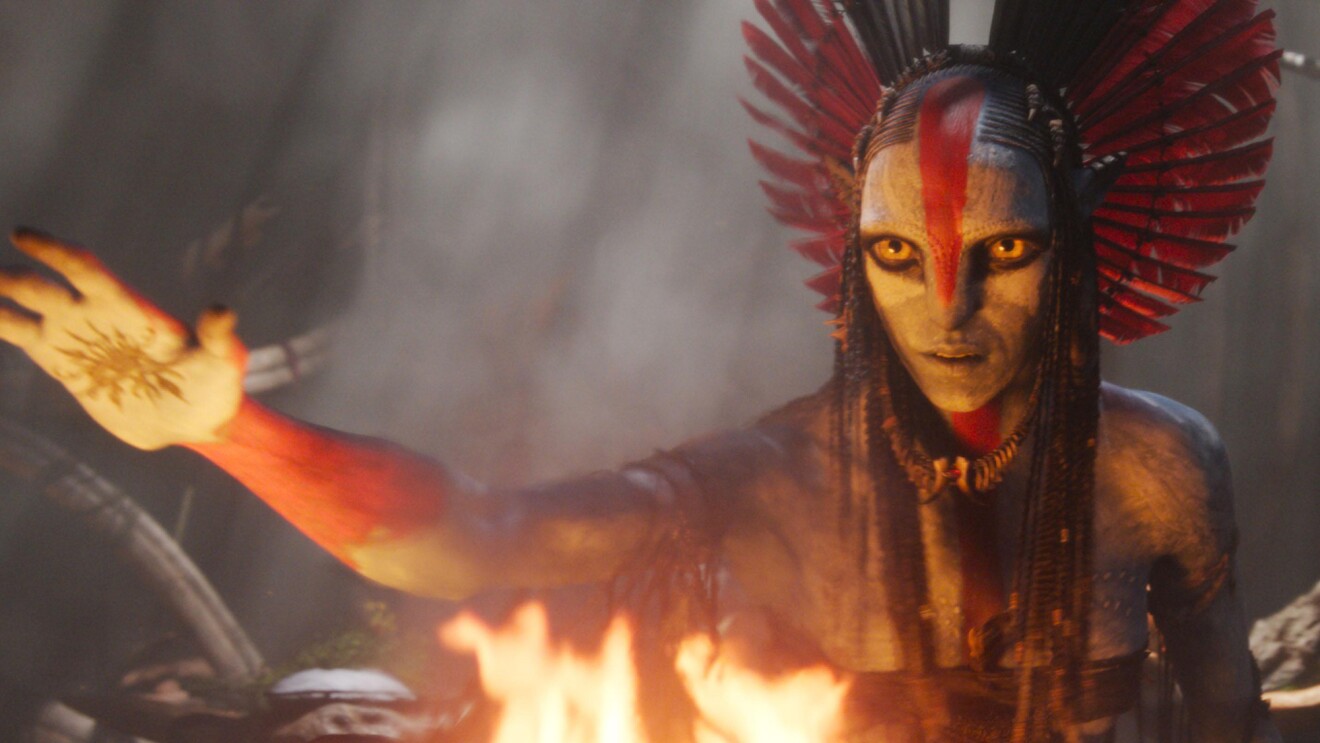For first-time showrunner, Little Marvin, there was something about his second ever Hollywood pitch meeting that just felt right.
The former Home Shopping Network executive had, at 40, quit his well-paying job in New York. With just a few belongings and his pilot script in hand, he moved back to LA to shop around his horror anthology series.
“I said to my partner, Lena Waithe, ‘Couldn’t we have just started at Amazon?’” said Little Marvin, who, at a lanky 6’4”, and with a large personality, comes off as anything but small. “It felt like almost instantly, Amazon wasn’t afraid of leaning into provocative and thorny issues. I was sure they were going to say, ‘go back and re-write your pilot.’ But, all they did was show support and encouragement for dialogue that’s really daring and scary.”
Amazon Studios quickly snatched up Little Marvin’s show, “Them: Covenant.” The show is about a Black family in the 1950s that moves to the Compton neighborhood of Los Angeles and faces malevolent forces that taunt, and threaten to destroy them. By historical TV standards, it’s “non-traditional.”
But this type of edgy, original niche programming—often imagined, written, and brought into being by a diverse group of creators—has become something of Amazon Studios’ calling card. The studio, which since 2013, has been creating its own original content, has tried to set itself apart from its peers in the streaming industry by giving storytellers freedom to tell their stories in original ways. Showrunners—the chief writers who create and essentially oversee, or “run,” a show—say Amazon is great to work with because the studio doesn’t micro-manage, and encourages them to take risks. Amazon Studios is betting its showrunners’ originality can attract loyal fan bases.
“We have a curated programming strategy where our objective is to make sure that the artist can make the best version of their show,” said Albert Cheng, COO and Co-Head of Television, Amazon Studios. “In order for us to build a service that our customers value, and to acquire new customers, our content needs to stand out amidst a competitive market.”
“Our goal is to make sure that we offer a wide range of titles, so that we can appeal to both the broad customer base as well as specifically targeted segments.”
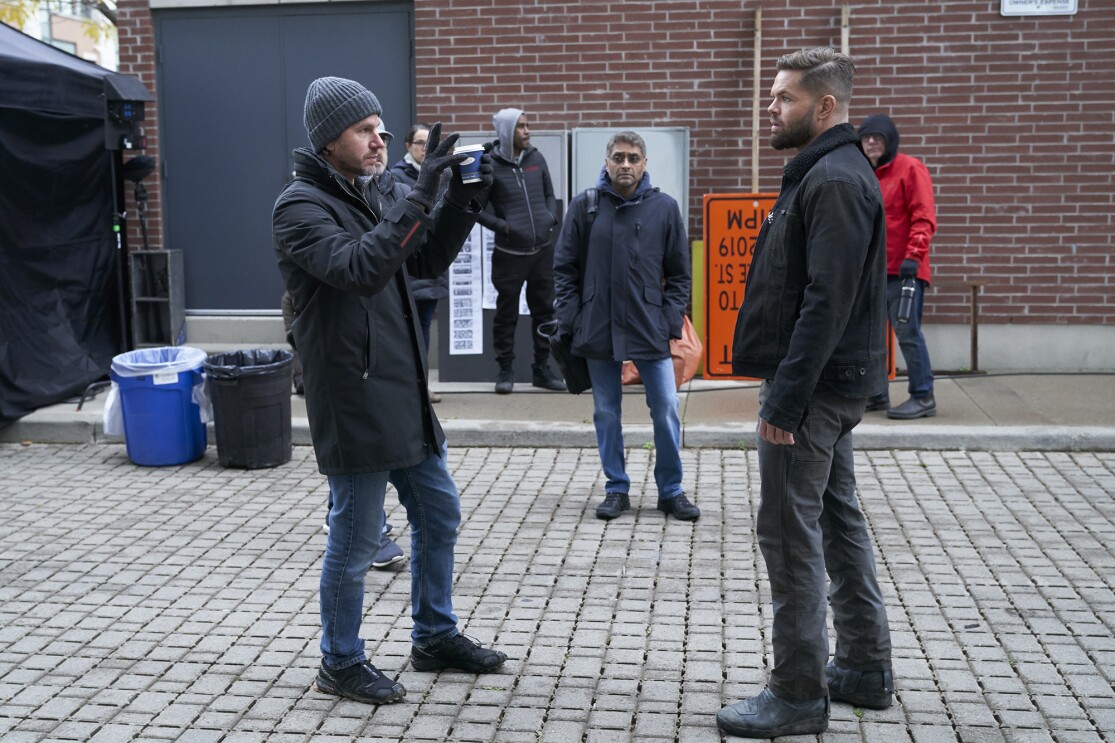 Naren Shankar looks on as cast and crew of "The Expanse" discuss a scene.
Naren Shankar looks on as cast and crew of "The Expanse" discuss a scene. All photos were captured pre-COVID-19 pandemic.
Amazon’s artists-first strategy
Until recently, deeply nuanced characters, let alone shows written by and about women or focused on Black families or transgender characters, were scarce on traditional broadcast and cable TV. Streaming services have disrupted the traditional entertainment model. Amazon, as well as scores of other streamers, unconstrained by bandwidth or nightly timeslots, can cater to a variety of audiences. Instead of trying to hit a home run with one show that appeals to everyone—for example, “ER” or “Friends”—and making advertisers happy, streaming services can offer diverse original content to entice as many different viewers as possible to sign up for subscriptions.
This new model has been a boon for storytellers, and Amazon is doing all it can to encourage the most creative storytellers to bring to life their artistic visions to Amazon Prime Video subscribers.
Kate Purdy, like Little Marvin, is a first-time showrunner whose series, “Undone,” found a home on Amazon Prime Video. The show stars Bob Odenkirk and Rosa Salazar, whose character, Alma, discovers her abilities to slip through time as she searches for the truth behind her father’s murder.
Purdy and her co-creator Raphael Bob-Waksberg, film the series using rotoscoping—a technique that mixes animation and live-action footage. It’s a rarely-used medium which helps accentuate one of the show’s themes of questioning linear time and temporal reality. Not every studio, Purdy says, would have embraced both the content and medium she uses to tell her story.
“When Raphael and I were developing the show we thought it would be very good for Amazon,” Purdy said, sitting in the writer’s room where she and the show’s staff writers gather to develop each season’s narrative. “The series is female-led, it’s a bit edgy, and it explores original content—which is what Amazon has a reputation for developing.”
“When we were pitching to Amazon, and we asked them ‘What are you looking for in a series?’ they said, ‘Original voices with fresh takes, which are character-based.’ And that’s the best answer you can get as a creator. Not, ‘Come to us with an army drama.’ But, ‘Come to us with what you’re passionate about and what you want to talk about’.”
The process of creating the show involves far flung coordinated teams. The writers, led by Purdy, outline a season in a Los Angeles workspace, and then go off to individually draft episodes. The actors are given minimal props for scenes that are filmed on black box sets similar to college theaters. Teams in Europe and Austin, Texas, then rotoscope and paint each frame of film—animating the actors and adding in backgrounds and psychedelic, time-travelling visuals.
Purdy’s show, which requires a high degree of technological chops to pull off, fits snugly into the slate of original storytelling Amazon Studios champions.
“In order for us to be truly customer obsessed, we need to make sure the content on Prime Video—both our Originals and the content we acquire through our partners—reflects the varied needs and interests of our customers,” said Cheng, Amazon Studios’ COO.
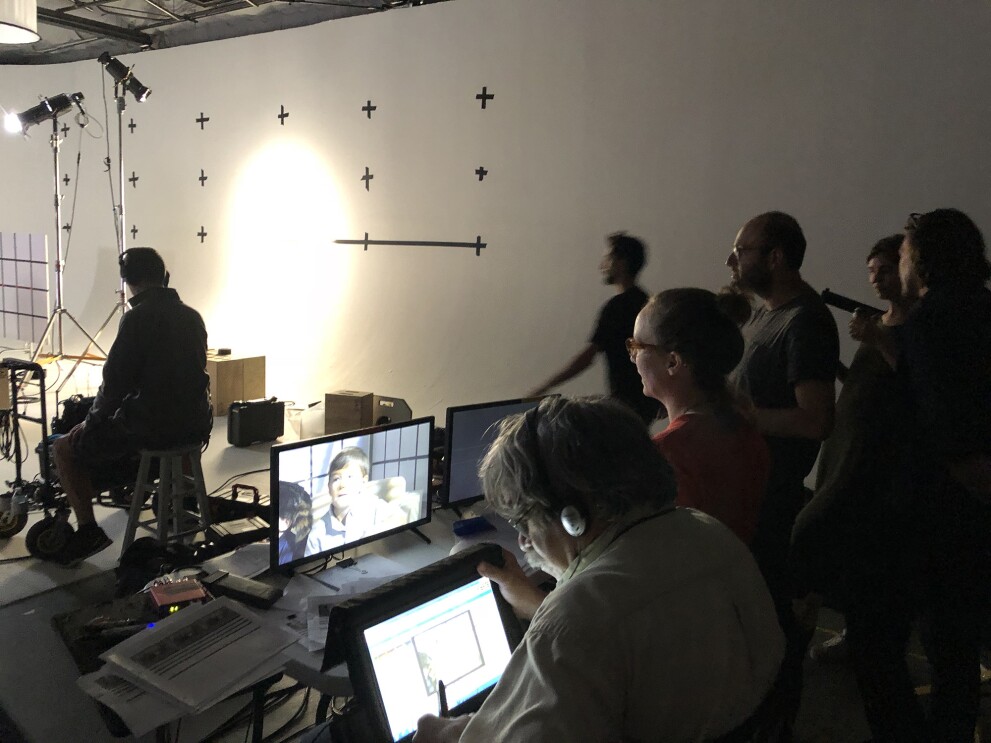 Kate Purdy, co-showrunner of "Undone," works with the crew while filming the series.
Kate Purdy, co-showrunner of "Undone," works with the crew while filming the series. All photos were captured pre-COVID-19 pandemic.
Why creators want to work with Amazon
Naren Shankar, the showrunner for Amazon’s sci-fi hit, “The Expanse,” is a veteran Hollywood writer with an atypical pedigree.
In the 1990s, Shankar moved to Hollywood and wrote scripts for various Star Trek-spin off series, but not before receiving his Ph.D. in applied physical and electrical engineering from Cornell University. Dressed in jeans and a casual sweater, and resting his feet on the writer’s table where the show’s scripts are created, Shankar could easily pass for a senior engineer or vice president at Amazon’s Seattle headquarters.
Creating “The Expanse” for Amazon, he said, is not dissimilar from running a 150-person tech startup. Overseeing scripts, working with actors, directors, studio executives, as well as with set designers and technologists is, he said, “just like during the startup phase when everyone is busting their ass building a company.”
“As a creator, you’re thinking, ‘Where can I do interesting things?’ And you see that Amazon has clearly sought out interesting voices with unique material that wasn’t being done before,” said Shankar, whose show is based on the popular series of books by James S.A. Corey. “On the creative side, Amazon has been a great partner. It’s not like they don’t have opinions. But, we have creative freedom to tell the stories we want to tell. There is a school of thought that any executive giving notes on a production of any kind is interfering with the creative process. I tend to look at it more as feedback. Everyone is interested in the same result. Everyone at Amazon wants to make a great show.”
A major advantage of working with a streaming service like Amazon, Shankar says, is the freedom to explore expansive storytelling that lets characters reveal themselves over time. Viewers of “The Expanse” get a relatively rare opportunity to see a multi-racial cast portray nuanced and original characters whose storylines don’t fit neatly into preconceived arcs.
“What’s so great about streaming, and telling stories in this medium, is it’s truly novelistic filmmaking,” Shankar said. “You could not make these series 10 years ago. We’re telling a 10-hour version of one of the books of the series—which, in all, will have nine books. You can’t do that in a movie. You can’t do that in an episodic show on TV. But you can do it at Amazon.”
Like Purdy, Shankar embraces technology as a crucial part of his storytelling, one that, like a memorable character, can deeply resonate with audiences.
“As a kid, I probably wanted to become an engineer because I loved Scotty, the chief engineer on Star Trek,” Shankar says. “In some sense I’ve come full circle. The level of technology that’s coming into film that you’re able to use now is incredible. The way new instrumentation allows you to shoot in a way you couldn’t just a few years ago. The way LED lighting changes the nature of what you can build on a set. These are profound things and technology is affecting every piece of creativity.”
Amazon Studio’s Cheng, observes that technology, in the service of storytelling, can be critical. But, he notes, great storytelling and productions are what draws in viewers.
“When we look for stories to develop into Originals, we have to believe that it is something so original that it can only come from that creator,” Cheng said. “We look for original voices and want our shows to be talked about in a way that drives the cultural conversation with broad or targeted audiences.”
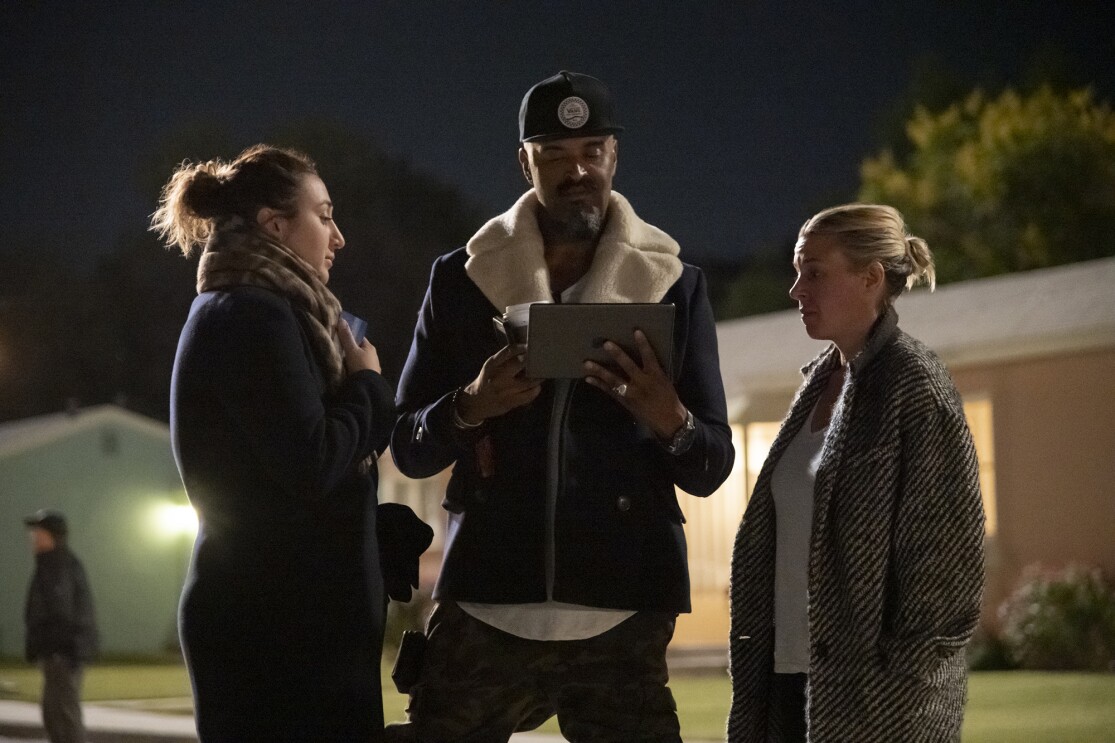 Little Marvin, showrunner of "THEM," on set and working with talent.
Little Marvin, showrunner of "THEM," on set and working with talent. All photos were captured pre-COVID-19 pandemic.
‘Lovers of cinema’
For Little Marvin, the showrunner of “Them,” his lack of writing experience wasn’t a disqualifier for Amazon. The studio, he said, supported his artistic vision. It has also, at times, played a hands-on role in the show’s creative direction.
“I didn’t assume, as a first-time creator, that I’d have that level of autonomy and encouragement that I’ve gotten,” Little Marvin said. “I also didn’t expect to have such hands-on feedback. You feel like you’re writing with a boutique studio. The team I work with is like family. They’re all lovers of cinema. They all love TV. And they love storytelling—and that’s first above all else. We all want the best thing for the story. At our notes meetings it’s always felt non-invasive and supportive.”
Little Marvin, by his own admission, came late to the showrunner profession. But, the skillset he developed running original programming at HSN has been critical to his new career. Knowing how to manage creative types and how to talk to studio executives, and understanding how to balance competing agendas while pushing forward controversial ideas are all skills he already developed before becoming a showrunner.
“This is a fantastically creative experience,” he said, noting the many different hats he wears in his role. “Once of the most gratifying things is discovering that, far past the time you thought was possible, you can be surprised and not count yourself out. And you can still do the work at a high level.”
For Amazon Studios, finding and developing talent that creates engrossing, must-see entertainment is critical. For creators, this means new channels and resources to tell their stories—often about themes that historically have been ignored. This, in turn, gives increasingly diverse audiences easy access to stories that can deeply resonate with their lived experiences.
“Look at ‘Transparent’ and the power of storytelling, and how it can shape our culture,” noted “Undone” creator, Kate Purdy, referencing the Emmy-award winning Amazon Original show, about a transgender character.
“Streaming services, and that business model, have allowed different voices to be heard. Streaming has allowed for niche shows aimed at smaller communities that weren’t necessarily reached when programming was just trying to reach the masses,” she said. “That means there’s more representation, more people get to see their own realities reflected back in what they’re watching. And that makes people feel validated, and seen, and present, and powerful. Hopefully, it helps to create a better sense of equality and representation. That’s a real benefit to everyone.”





